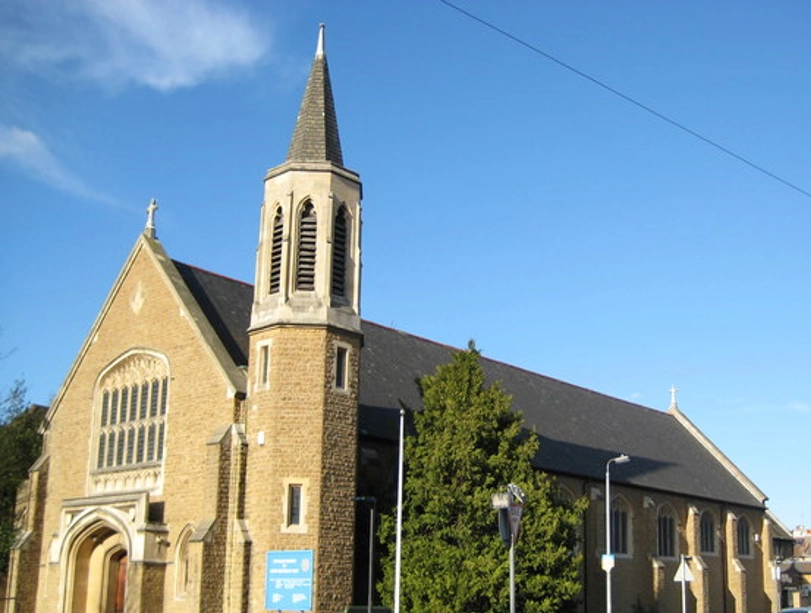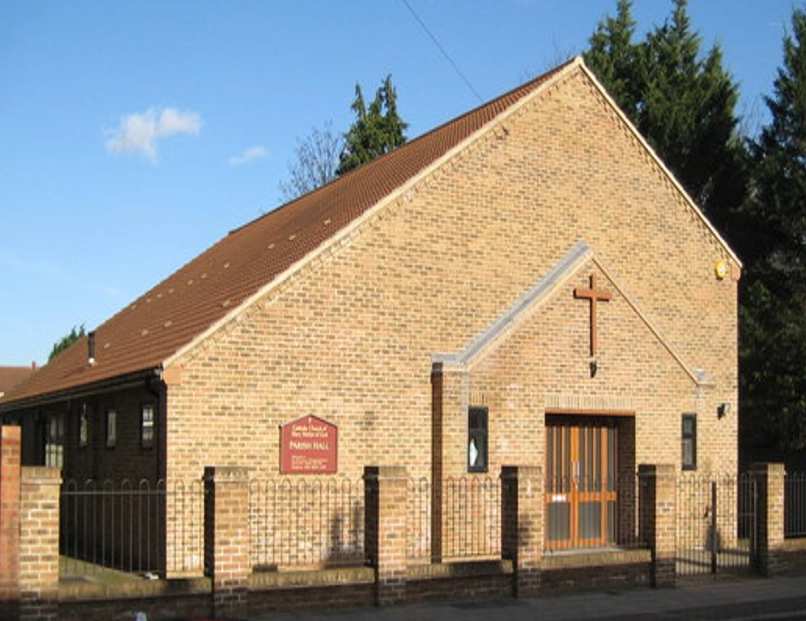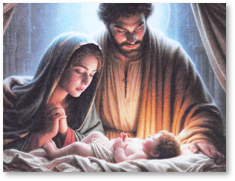About our Parish

AN EARLY HISTORY OF OUR CHURCH IN PONDERS END
In the year of 1866 approximately, several women and girls, and also a few men, were sent to Ponders End from Dundee to start a jute factory and to teach the local people the work.
Several of the girls were Roman Catholics and there was no Church nearer than Waltham Cross to the north and Tottenham to the south for them to worship in. The girls would sometimes take a train to Tottenham in order to go to Confession but, because trains were so few and far between, on Sundays they would work across the marshes, beside the River Lea, to Waltham Cross in order to go to Mass. Invariably they had to make it a day’s outing, taking their packed lunches with them.
A Catholic lady, who was a forewoman at the jute factory, had a house in Alma Road and many of the girls would gather there each evening to say the Holy Rosary. They all contributed towards a statue of Our Lady and made the first little altar in Ponders End.
Fr. Hickay and Fr. Tuke were priests at Waltham Cross and they would sometimes visit the girls in their lodgings.
Page 1 of Part I

AN EARLY HISTORY OF OUR CHURCH IN PONDERS END
In 1876 Fr Bronsgeest was sent to Waltham Cross as Parish Priest and then Mass would be said occasionally in a room of a house occupied by a Mrs Quinn. The house was near the jute factory and Mass was only said on a weekday. Then a Miss Armstrong, a teacher from Waltham Cross, came and catechised the children on Sundays in Mrs Quinn’s house until the time that she returned to Dundee and the house was no longer available.
In 1887 Fr Bronsgeest obtained a house in Stanley Street, now demolished, and used it as a school. Canon Richards, the Diocesan Inspector, would visit the school and report back to Cardinal Manning. Mass was said on Fridays in Stanley Street in one room and Confessions were heard in another room. Later Fr, Bronsgeest bought a piece of land in Alma Road and in 1888 Cardinal Manning sent a corrugated iron building which was about as large as the present hall and which had previously been the workshop attached to the industrial school in Ilford. It was created in Alma Road and used as a school and church.
In 1890 Fr. Bronsgeest built a brick building behind the corrugated iron building. This was the first St.
Page 2 of Part I

AN EARLY HISTORY OF OUR CHURCH IN PONDERS END
Mary’s School and was also used as the first Church.
Fr Bronsgeest served Enfield as well as Waltham Cross and so Mass in Ponders End was said on Fridays. This was because on Sundays Fr Bronsgeest gave Communion at Waltham Cross at 8.00 am.
Then he went by pony and trap to Enfield for Mass at 9.00 am.n back to Waltham Cross for Mass at 11.00 am.re was Benediction at Ponders End at 3.00 pm and then Benediction at Waltham Cross at 6.00 p.m. In later years he became very familiar figure in the area riding his tricycle.
Sometime in 1899 Fr Bronsgeest was relieved of the Enfield and Ponders End Parishes. Fr O’Gorman was Parish Priest of Enfield and he was able to say mass in Ponders End on Sundays and Holydays.
In 1904 the Redemptorist Fathers came to Edmonton Parish and the supply of Ponders End was transferred from Enfield to them. Mass continued to be said on Sundays and holydays, as before, and the serving priest would then go to a house in Ponders End for breakfast.
In 1912 the Redemptorists obtained the land the Church now occupies in nags head Road. A corrugated iron building was built and used as a Church.
Page 3 of Part I

AN EARLY HISTORY OF OUR CHURCH IN PONDERS END
The old church in Alma Road was pulled down to make a bigger playground for the school. The priest was then visiting a family at 140 Nags Head Road for his breakfast on Sundays.
After the First World War, in 1919, Fr Foley was appointed as the first Parish Priest in Ponders End. He had just left the forces as a Chaplain and at once made up his mind to build the fine Church that we now have. His friend Fr. Craven, who later became Bishop Craven, introduced him to a Mr Hubberstey. Later the Parish was able to benefit from Mr. Hubberstey’s estate.
The foundation-stone of the new church was laid by Cardinal Bourne in September 1921. However due to lack of funds, the first Mass in the newly built church of St. Mary’s was not to be said until Christmas Eve, 1924.
The stained glass windows in the Lady Chapel are Fr Foley’s personal tribute to Fr. Bronsgeest, each window representing one of the saints of his Christian names (Edward, Ambrose, George and Joseph).
Page 4 of Part I

THE CARDINAL AT PONDERS END
His Eminence Cardinal Bourne visited Ponders End on the last Sunday of September 1921 for the purpose of laying the foundation-stone of the new church now in course of construction, and to administer Confirmation.
The present temporary building, which was erected in 1912, is now quite unsuitable for the needs of the parish and although it will be impossible for the parishioners to contribute anything like the whole cost, work has already begun on the new church and an appeal is being made by the Cardinal’s hearty approval. One benefactor has given £1000; but as Father Foley pointed out in our columns last week, this sum will be entirely swallowed up by the builders’ bill for the last two months.
The ceremony of laying the foundation stone opened with the blessing of holy water by His Eminence, who then proceeded to sprinkle the place where a wooden cross, directed by the rubric to be set up to indicate the position of the altar, stands, and afterwards the foundation-stone itself. Upon the stone, the Cardinal engraved crosses on each side, saying a special prayer.
Page 1 of Part II

THE CARDINAL AT PONDERS END
The Litany of the Saints was recited at the foot of the cross, as well as the appropriate antiphon and special psalm. The stone was then lowered into its place, to the recitation of a prayer and sprinkled with holy water. More antiphons and psalms followed, and the Cardinal sprinkled the other foundations, pausing three times to say a special prayer. The ceremony concluded with the Veni Creator Spiritus and two prayers.
Addressing those present, His Eminence said that the start that had been made in the building of the church was a great step forward in the work they wished to do in the parish. The building of a permanent church was very important from the point of view of the missionary activity of the Catholic Church.
The English mind attached great importance to the external surroundings of religion. Those outside the Church were not attracted, but rather repelled when they saw Catholics worshipping God in a temporary church. They would be much more likely to listen to the teaching of our Church if they found a building permanently consecrated to the service of God.
Wherever possible churches should be built worthy of God’s majesty and showing forth the glory of the Church and the glory of Almighty God who gave the Church her Faith.
Page 2 of Part II

THE CARDINAL AT PONDERS END
Now that they were to have a permanent church, the parishioners had to do their part. The first thing was to show by their attendance there their desire to take part in the work. Some of them might feel attracted to go to other more beautiful or more accessible churches, but they should now show their appreciation of the self-sacrifice of their rector.
The surest thing of bringing down help and blessing was by prayer, and prayers would inspire more fully endowed Catholics to help that church. In conclusion, he would ask them to pray for all benefactors, and especially for the benefactor who, a few moments ago, had handed Father Foley a cheque of £1000.
Two hundred days Indulgence was granted by His Eminence to those attending the ceremony. The clergy assisting the Cardinal were the Very Revd. Mgr. Jackman, Father Foley (rector) and Father Craven. His Eminence subsequently administered Confirmation to over twenty candidates and officiated at Benediction.
Preaching at St. Mary’s Ponders End, on Sunday, on the occasion of his first visit to the new church, His Eminence Cardinal Bourne congratulated Father Foley and his congregation on the realisation of their hopes, and expressed his own joy at being with them in their thanksgivings.
Page 3 of Part II

THE CARDINAL AT PONDERS END
Since the formal opening of the church at Christmas time, he said it has been his intention at the first available opportunity, to visit them; and though the present occasion was unattended by ceremonial such as would be a part of the formal opening of a new church, this simple and homely act of thanksgiving was not less sincere and genuine on that account; later he hoped, would come the consecration of the church, when they would be able to fittingly demonstrate their joy and gratitude.
His Eminence recalled his visit to them twenty years ago, and spoke of the period of fourteen years during which the locality was served with great zeal and devotion by the Redemptorists at Edmonton, who undertook the charge in addition to their own work, as it was not possible at that time to set aside a priest to attend exclusively to Ponders End. Touching upon later history of the mission, the Cardinal referred to the coming of Father Foley in 1919 as resident priest, and of the burdens and difficulties before him and the criticisms which he had to meet from those who thought his schemes too ambitious.
Page 4 of Part II

THE CARDINAL AT PONDERS END
The long delay in the completion and opening of the church, from the laying of the foundation in 1921, he looked upon as a test of patience and perseverance; and finally they owed a debt of gratitude to late Mr Hubberstey who had been Father Foley’s most generous and encouraging supporter to the time of his death, when it was found that he had bequeathed a substantial sum of money for the church; his should never be forgotten in their prayers. They who not so many years ago had been a small and apparently almost abandoned flock, with only a temporary building in which to meet, had now a church which in its beauty and suitability will rank amongst the finest in the diocese. That church should occupy a most important place in their lives.
For a Catholic there were always two homes; the home where his daily life was lived, with those dear to him, and the spiritual home, where he might come not only for Sunday Mass, but for daily Mass if possible, or for a few moments’ prayer at any time and on any day. A Catholic church differed from a church built by any other body of Christians.
Page 5 of Part II

THE CARDINAL AT PONDERS END
Others, it was true, built churches in which to meet for the worship of God; but it is only the Catholic Church could He be worshipped in the full sense of the word, because of the Real Presence of the Blessed Sacrament of the Altar. The church would also be the centre of a new sphere of influence; their non-Catholic brethren might visit it with great profit to themselves. The English people, he believed were still at heart deeply religious; but owing to the doctrinal difficulties and conflicting opinions by which they were surrounded, the majority of them had lost heart, and almost lost contact with any form of organised religion; many of them looked with longing eyes towards the Catholic Church, which could speak with unerring voice and authority in the name of God himself upon all doctrinal matters.
In conclusion, His eminence dwelt on the beauty of the church as a factor to its influence on those about them.
Page 6 of Part II

THE CARDINAL AT PONDERS END
The average English man was impressed by a simple and suitable church; he had little sympathy with a poor, mean building as a place of worship, because he forgot the poverty and meanness of the Cave of Bethlehem, and he forgot – what Catholics realised so well – the great work which had so often been done in poor obscure places, and important undertakings for the glory which had grown up from very humble beginnings.
Benediction was given by His Eminence, assisted by Father Foley. A body of fifty Crusade of Rescue Boy scouts from St. Joseph’s Home, Enfield, formed a guard of honour, under the direction of the Revd. C. L. Bell (Scoutmaster) and Assistant Scoutmaster Bell Hubbard.

